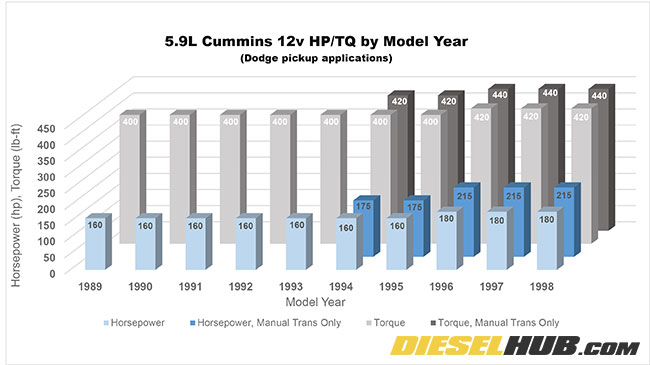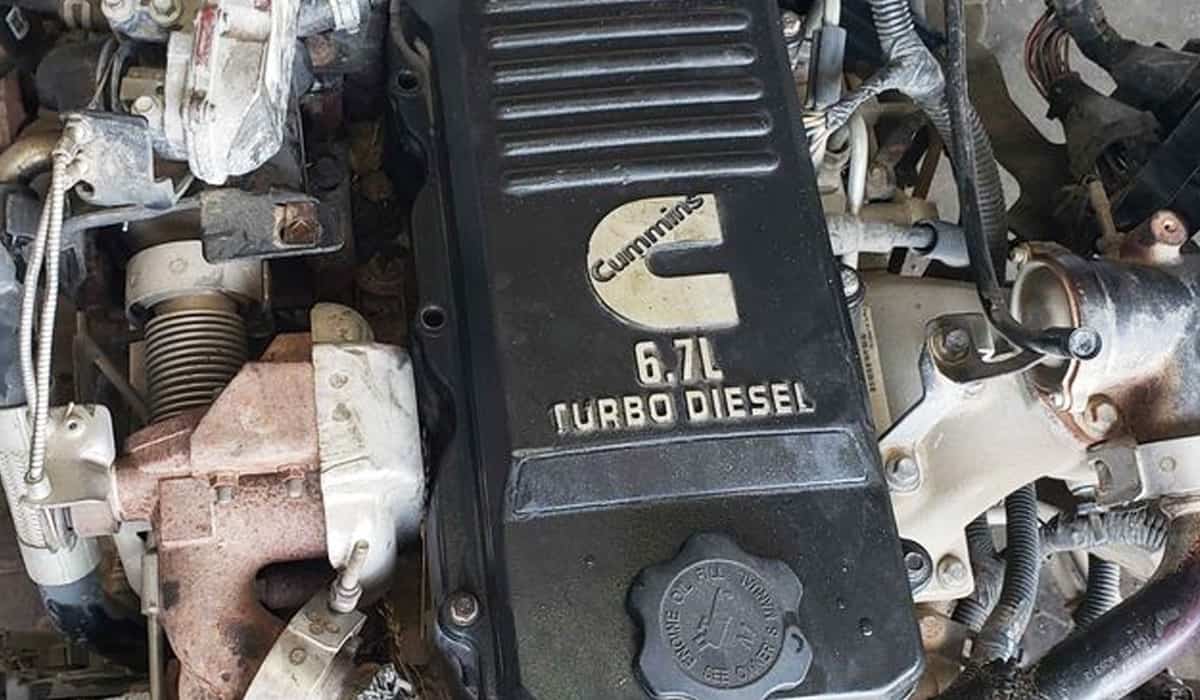A Comprehensive Guide to Dodge Cummins Engine Specifications by Year
A Comprehensive Guide to Dodge Cummins Engine Specifications by Year
Introduction
In this auspicious occasion, we are delighted to delve into the intriguing topic related to A Comprehensive Guide to Dodge Cummins Engine Specifications by Year. Let’s weave interesting information and offer fresh perspectives to the readers.
Table of Content
A Comprehensive Guide to Dodge Cummins Engine Specifications by Year
The Dodge Cummins engine, a formidable partnership between Dodge and Cummins, has become synonymous with power, durability, and reliability. Since its introduction in 1989, this legendary powertrain has found its way into countless trucks, becoming a favorite among enthusiasts and professionals alike. Understanding the evolution of this iconic engine requires a deep dive into its specifications across various model years.
Dodge Cummins Engine Specifications: A Year-by-Year Breakdown
1989-1993: The Genesis of Power
The first-generation Dodge Cummins, officially known as the ISB 5.9L, marked a significant departure from the traditional gasoline engines prevalent in trucks at the time. Its 5.9-liter inline-six cylinder design, featuring a robust cast-iron block and head, delivered an impressive 160 horsepower and 360 lb-ft of torque. This combination, coupled with its fuel efficiency and reliability, quickly established the engine as a game-changer in the pickup truck market.
1994-1998: Enhancing Power and Efficiency
The second-generation Cummins ISB 5.9L saw significant improvements. The addition of a variable-geometry turbocharger (VGT) boosted horsepower to 215 and torque to 420 lb-ft. Further refinements included a redesigned injection pump and a revised intake manifold, enhancing both performance and fuel efficiency.
1998-2002: The Rise of the High Output Engine
The third-generation Cummins ISB 5.9L introduced the "High Output" (HO) variant, a defining moment in the engine’s history. This iteration boasted a larger turbocharger, revised fuel injectors, and an upgraded electronic control unit, resulting in a substantial jump in power to 235 horsepower and 460 lb-ft of torque. This HO engine became the benchmark for power and performance in the segment, solidifying the Cummins’ reputation for unmatched towing and hauling capabilities.
2003-2007: The ISB 5.9L Reaches its Peak
The fourth-generation Cummins ISB 5.9L, with its advanced electronic controls and refined combustion system, reached its peak in terms of power and efficiency. The HO version delivered 325 horsepower and 610 lb-ft of torque, making it the most powerful Cummins engine yet. This generation also saw the introduction of the "Common Rail" (CR) fuel injection system, significantly improving fuel economy and reducing emissions.
2007-2018: The ISB 6.7L Takes Center Stage
The fifth generation witnessed the introduction of the ISB 6.7L engine, a significant upgrade in both displacement and technology. This larger engine, boasting a 6.7-liter displacement, offered a substantial increase in power and torque, reaching 350 horsepower and 650 lb-ft of torque. The 6.7L also incorporated advanced emissions control systems, including a Selective Catalytic Reduction (SCR) system, ensuring compliance with stringent environmental regulations.
2019-Present: Continuing Evolution and Refinement
The sixth generation of the Cummins ISB 6.7L continues to refine its performance and efficiency. The engine now delivers 370 horsepower and 850 lb-ft of torque, placing it firmly at the top of the power and torque ratings in its class. The engine also features further improvements in fuel economy, emissions control, and overall refinement, making it a compelling choice for those seeking the ultimate blend of power and efficiency.
Key Specifications to Consider:
- Horsepower: The amount of power the engine generates, measured in horsepower (hp).
- Torque: The twisting force the engine produces, measured in pound-feet (lb-ft).
- Displacement: The volume of the engine cylinders, measured in liters (L).
- Fuel Injection System: The method used to deliver fuel to the cylinders, including common rail (CR), mechanical, or electronic systems.
- Turbocharger: A device that uses exhaust gases to force more air into the cylinders, increasing power and efficiency.
- Emissions Control Systems: Technologies designed to reduce harmful emissions, including exhaust gas recirculation (EGR), selective catalytic reduction (SCR), and diesel particulate filters (DPF).
FAQs by Dodge Cummins Engine Specifications by Year
Q: What is the most powerful Dodge Cummins engine?
A: The most powerful Dodge Cummins engine currently available is the sixth-generation ISB 6.7L, producing 370 horsepower and 850 lb-ft of torque.
Q: What is the difference between the 5.9L and the 6.7L Cummins engines?
A: The 6.7L Cummins engine offers a larger displacement, significantly more power and torque, and features more advanced emissions control technologies compared to the 5.9L engine.
Q: What are the advantages of a Dodge Cummins engine?
A: Dodge Cummins engines are renowned for their power, durability, reliability, and fuel efficiency. They are well-suited for heavy-duty towing, hauling, and off-road use.
Q: How often do Dodge Cummins engines need maintenance?
A: Dodge Cummins engines require regular maintenance, including oil changes, air filter replacement, and fuel filter changes. Following a regular maintenance schedule can significantly extend the engine’s lifespan and performance.
Tips by Dodge Cummins Engine Specifications by Year
- Regular Maintenance: Adhering to a strict maintenance schedule is crucial for maximizing engine longevity and performance.
- Fuel Quality: Using high-quality diesel fuel is essential for optimal engine operation and reduced wear.
- Engine Oil: Using the recommended engine oil and changing it at the prescribed intervals is vital for lubrication and engine protection.
- Air Filter: A clean air filter ensures proper airflow to the engine, contributing to efficient combustion and performance.
- Fuel Filter: A clogged fuel filter can restrict fuel flow, leading to performance issues. Regular replacement is essential.
Conclusion by Dodge Cummins Engine Specifications by Year
The Dodge Cummins engine has been a cornerstone of the pickup truck market for over three decades. Its enduring popularity stems from its exceptional combination of power, durability, and reliability. As technology continues to advance, Dodge and Cummins continue to refine the engine, introducing new features and innovations that enhance performance, efficiency, and emissions control. Whether you are a seasoned truck owner or a first-time buyer, understanding the specifications and evolution of the Dodge Cummins engine is crucial for making an informed decision and ensuring a rewarding ownership experience.








Closure
Thus, we hope this article has provided valuable insights into A Comprehensive Guide to Dodge Cummins Engine Specifications by Year. We appreciate your attention to our article. See you in our next article!
